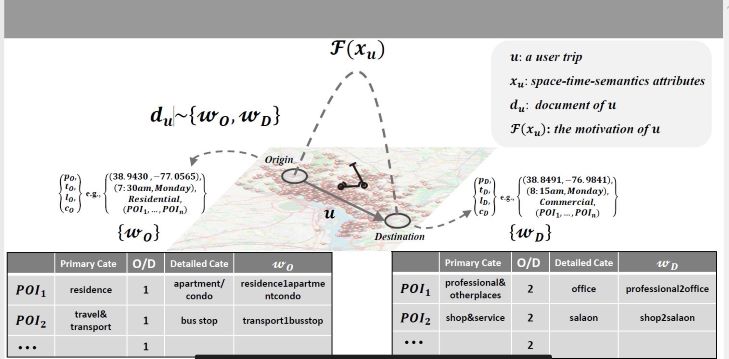Understanding spatiotemporal trip purposes of urban micro-mobility from the lens of dockless e-scooter sharing
Understanding spatiotemporal trip purposes of urban micro-mobility from the lens of dockless e-scooter sharing

Over the last two years, we have witnessed the ever-fast growth of micro-mobility services (e.g., e-bikes and e-scooters), which brings both challenges and innovations to the traditional urban transportation systems. For example, they provide an opportunity to better address the “last mile” problem due to their convenience, flexibility and zero emission. As such, it is essential to understand why and how urban dwellers use these micro-mobility services across space and time. In this paper, we aim to understand spatiotemporal trip purposes of urban micro-mobility through the lens of dockless e-scooter user behavior. We first develop a spatiotemporal topic modeling method to infer the underlying trip purpose of dockless e-scooter usage. Then, using Washington, D.C. as a case study, we apply the model to a dataset including 83,002 valid user trips together with 19,370 POI venues and land use land cover data to systematically explore the trip purposes of micro-mobility across space and time in the city. The results confirm a set of uncovered 100 Trips Topics as an informative and effective proxy of the spatiotemporal trip purposes of micro-mobility users. The findings in this paper provide important insights for city authorities and dockless e-scooter companies into more sustainable urban transportation planning and more efficient vehicle fleet reallocation in future smart cities.
Link to paper: https://authors.elsevier.com/a/1fHJHjFQguwWW
